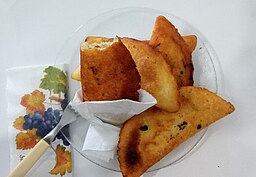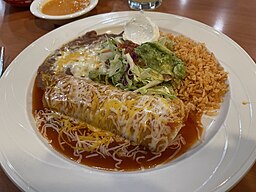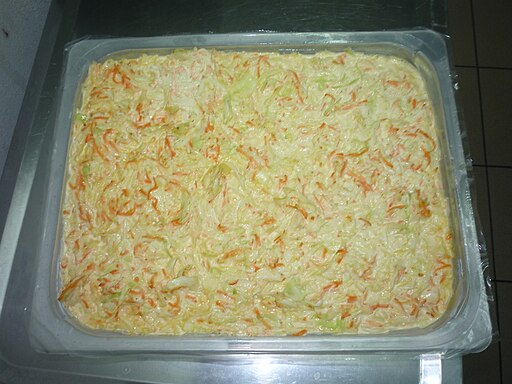What about this recipe?
Lobster mac and cheese is a popular dish that combines the rich flavors of lobster with creamy macaroni and cheese. While the exact origin of this recipe is not clear-cut, it is believed to have originated in North America, particularly in the New England region.Macaroni and cheese, on the other hand, has a long history that predates the incorporation of lobster. It is thought to have originated in Italy, with early versions of macaroni and cheese recipes appearing in Italian cookbooks as far back as the 13th century. Macaroni and cheese made its way to North America with European immigrants, and it eventually became a popular comfort food in the United States.
The combination of lobster and macaroni and cheese is believed to have been a natural progression, with lobster being added to elevate the dish and create a more indulgent and luxurious version of mac and cheese. This decadent twist likely emerged in the coastal regions of New England, where lobster was plentiful and culinary creativity was abundant.
Over time, lobster mac and cheese has gained popularity across the United States and beyond, becoming a beloved dish in seafood restaurants and home kitchens alike. Variations of the recipe can be found in various cookbooks and online sources, with chefs and home cooks adding their own personal touches to make it their own.

How to make this recipe: Lobster Mac And Cheese?
Lobster Mac And Cheese Recipe Ingredients: 1 pound elbow macaroni
2 cups cooked lobster meat, chopped4 tablespoons unsalted butter
1/4 cup all-purpose flour
3 cups milk
2 cups shredded sharp cheddar cheese
1 cup shredded Gruyere cheese
1/2 cup grated Parmesan cheese
1/4 teaspoon paprika
1/4 teaspoon cayenne pepper (optional, for a bit of heat)
Salt and pepper to taste
1/2 cup breadcrumbs
Instructions for making Lobster Mac And Cheese:
1. Preheat your oven to 375°F (190°C) and lightly grease a baking dish.2. Cook the elbow macaroni according to the package instructions until al dente. Drain and set aside.
3. In a large saucepan, melt the butter over medium heat. Add the flour and whisk continuously for about 2 minutes to make a roux.
4. Gradually pour in the milk, whisking constantly to avoid lumps. Cook for 5-7 minutes until the sauce thickens.
5. Reduce the heat to low and add the shredded cheddar, Gruyere, and grated Parmesan cheese to the sauce. Stir until the cheese melts and the sauce becomes smooth and creamy.
6. Add the paprika, cayenne pepper (if using), salt, and pepper. Taste and adjust the seasoning as needed.
7. Remove the saucepan from the heat and fold the cooked elbow macaroni and chopped lobster meat until evenly coated with the cheese sauce.
8. Transfer the mixture to the greased baking dish and spread it out evenly.
9. Sprinkle the breadcrumbs over the top of the macaroni and cheese.
10. Bake in the preheated oven for about 20-25 minutes or until the top is golden and the cheese is bubbly.
11. Once cooked, remove from the oven and let it cool for a few minutes before serving.
That's all. Serve your delicious lobster mac and cheese while it's still warm.
Thank you and Bon Appetite. Alex
Nutrition Value for Lobster Mac And Cheese Recipe
The nutritional value of a recipe can vary depending on the specific ingredients used and the portion sizes. Here is a general breakdown of the approximate nutritional information for lobster mac and cheese:Please note that the values provided are estimates and can vary based on specific brands and variations in the recipe:
Serving Size: 1 cup (approximately)
Calories: 500-600 calories
Total Fat: 25-30 grams
Saturated Fat: 15-18 grams
Trans Fat: 0.5-1 gram
Cholesterol: 100-150 milligrams
Sodium: 700-900 milligrams
Carbohydrates: 45-50 grams
Fiber: 2-3 grams
Sugars: 6-8 grams
Protein: 25-30 grams
These values are approximate and can vary depending on the specific ingredients and quantities used. It's always a good idea to refer to the nutritional information provided on the product labels of the ingredients you use or consult a registered dietitian for more accurate calculations based on your specific recipe and serving sizes.
Thank you. Alex
If you like Red Snapper Fish you can find a delicious recipe here: Mediterranean Red Snapper recipe
If you like Shrimp Scampi you can check this interesting and delicious recipe here: Shrimp Scampi Recipe






